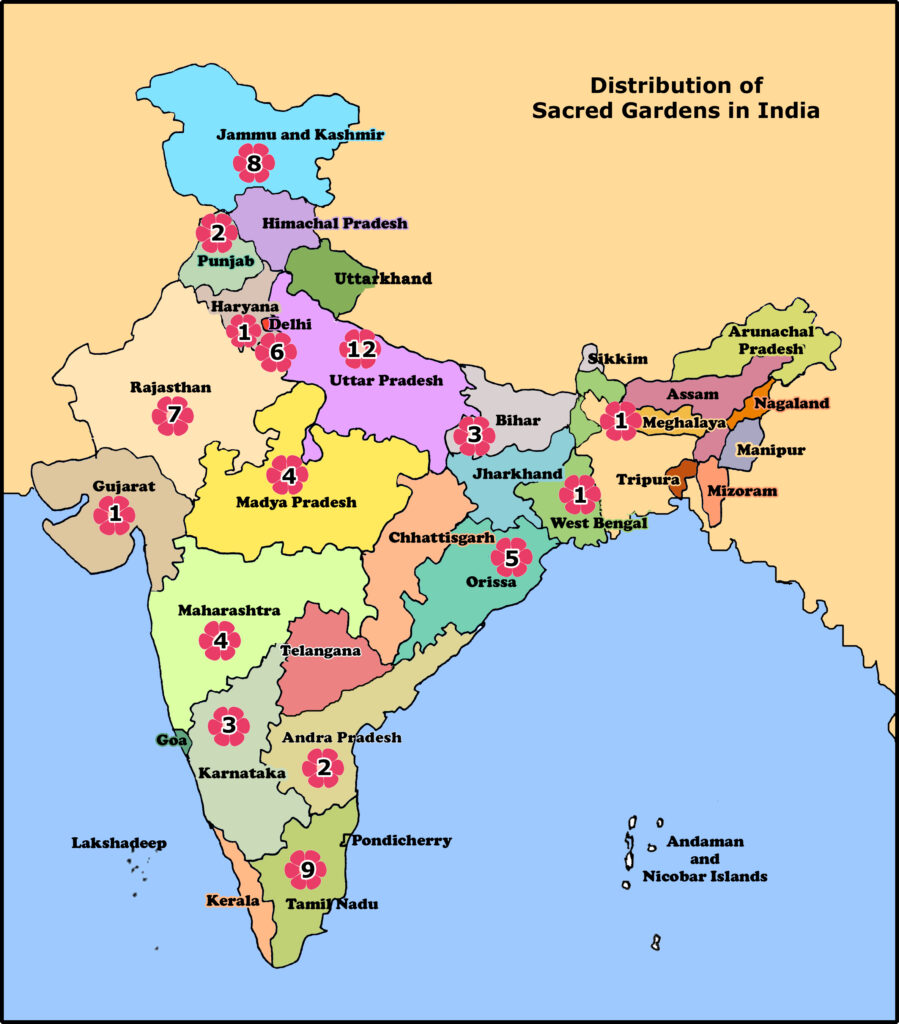
Andal Nandavanam, Srivilliputhur (Tamilnadu)
Sacred gardens are an ancient tradition in many major cultures, including our own. They are the cultivated counterparts of the sacred groves and are a place for meditation, spiritual awakening and celebration.
Although, there is less archaeological evidence of early gardens in India, the Hindu scriptures and books (Ramayana, Abijnana Shakuntalam, Mrichchakatika etc.) give remarkably detailed description of elaborate gardens with flowerbeds, lotus ponds, fruiting trees, creepers and shady spaces. Infact, gardens were a symbol of paradise in Hindu philosophy and art.
types of sacred gardens:
- Nandavanam – Divine plays (leelas) of Hindu Gods are often depicted in gardens. Most Hindu temples are therefore associated with gardens, also known as Nandavanam. These gardens are usually managed and maintained to serve the temple. For example, the Thirunandavanam or Madurakavi nandavanam attached to the Renganathar temple at Srirangam.
- Bagh (Bagicha) – They are ethno-silvi-horticultural gardens, traditionally planted near tanks, settlements or amidst forests, especially in the northern parts of our country. The biodiversity mainly consists of utility trees such as Mangifera indica, Madhuca latifolia, Syzygium cuminii etc. Green felling is totally banned in these gardens. Also, there is temple or separate space dedicated to the Gods (or village deity). For example, an excellent Bagh exists near a village inside the Darrah Wildlife Sanctuary in Kota. (Source: Sacred Forestry by Deep N. Pandey)
- Buddhists gardens – In Buddhism, gardens are described as a place for meditation and healing. There were beautiful gardens in Nalanda and Taxila. It is even believed that Lord Buddha was born under a tree at the Lumbini garden (now in Nepal), which is now listed as a World Heritage Site. The monasteries played a central part of the life in the monasteries during early periods. Even today, many monasteries in India have gardens attached to them.
Distribution of Sacred Gardens in India



